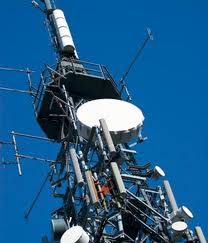 Welcome to the discussion of circuit switched wide area networks. My name is Dave and I’ll be instructor in this module. If you have questions, use the question/comment box on the Gogo website. Let’s get started.
Welcome to the discussion of circuit switched wide area networks. My name is Dave and I’ll be instructor in this module. If you have questions, use the question/comment box on the Gogo website. Let’s get started.
In this module, we’re going to start with an overview of telecom and telecom circuits. We’ll take a look at some of the old technology that I guess many of us had hoped would drift into oblivion but we still need to do with the fact that a lot of modem type of technologies out there not just the type of modems that we used to use for low speed dial-up internet access. And we’ll talk about another type of circuits which technology and that is integrated services digital network.
So, in telecom, what do we need to – we’re talking about telecommunications here, but in circuit switching, what do we have is some basic building blocks to work from. Circuit switches and circuits are formed as bi-directional physical connections and they carry information at whatever the speed of propagation is on the medium, let’s say at light speed, I guess that’s true, but it’s not same as a speed and free-space but it’s limited to speed that can be transferred along the medium and turns out that what you need is the plastics that we encountered in wired transmission, lines and the refractor industry associated with glass optical fiber is the actual propagation velocity surround two thirds of the speed of light into free space. So, we can use copper or we can use glass for communications, methods if we’re going to a wired environment or we can actually use a wireless approaches we discussed in a previous module.
In our circuit switching here, this is an analogous to the PHY layer of datacom protocols. So, let’s take a look at what we actually are going to do here. We create and end-end connection and remember that online package switching and circuit switching, we formed a dedicated path from one in system to another in system and we patched through the switching and relaying devices internal to the networks. The actual in system connection can call on lines and the interconnections are groups of lines called trunks. The actual service providers in circuits switch technologies form meshes of circuits right matter there are redundant measures of interconnections and this makes them to the ability to provide reliable wide area connections at all times. The connection between the premises equipment for the customers through the circuits switches is part of the services provided and then the other part of the job of the service provider is to interconnect circuit switches within the network core. So, this I established connections from my device to the network and the network does the interconnection and then forms a connection from the other into the network out to the customer. So, the interconnection lines remember called trunks.
In circuit switching we have on-demand physical connections between circuits. The in system decide when to create a connection and as you’d expect, there is a set up delay but unlike packet switching there’s no store-and-forward mechanism and there is no error correction mechanism involve. The digital bits just move through the switches from insistent incest. So, we build and for this communications to take place. We obviously have to build the circuits’ end-to-end. And so, the circuits within this can be classified as dial-up or there will be a set up and tear down time or lease circuits and lease circuits are analogous to the premise virtual circuits we talked about. The lease circuits are permanent and yet they are set up for long periods of time based on a subscription contract or service level agreement.
With circuit switching, the connections are acting as bit-pipes and as such provide or introduce a minimal amount of delay and minimal jitter. In theory, we say there’s no jitter but no electronic devices perfect soldiers, perhaps there are some but very, very little. There is no attempt to quantitize the groups of ones and zeros. There’s no attempt to buy the system to require a frame. So, I can just pure an ongoing stream of digital information from one in system to another in system.
Now, in a lot of traditional phone systems that we have today, the ones and zeros not begin until we get to the local exchange which would be in the network lab so we would actually have an analog signal going back to an interface card at the local exchange. But, the important part is minimum possible delay in jitter, but there is no error checking. And for real-time applications are error checking and error correction don’t make any sense. You don’t have the opportunity to retransmit or correct the error. You just have to attempt to deal with it by hiding it or ignoring it. So, this is ideal for a lot of real-time transmission such as voice.
Telecommunications Essentials Pt 1
